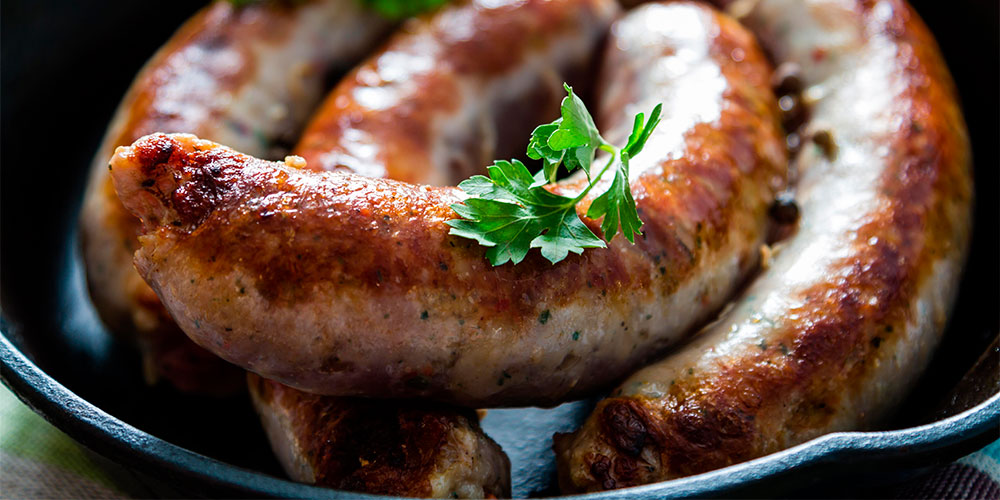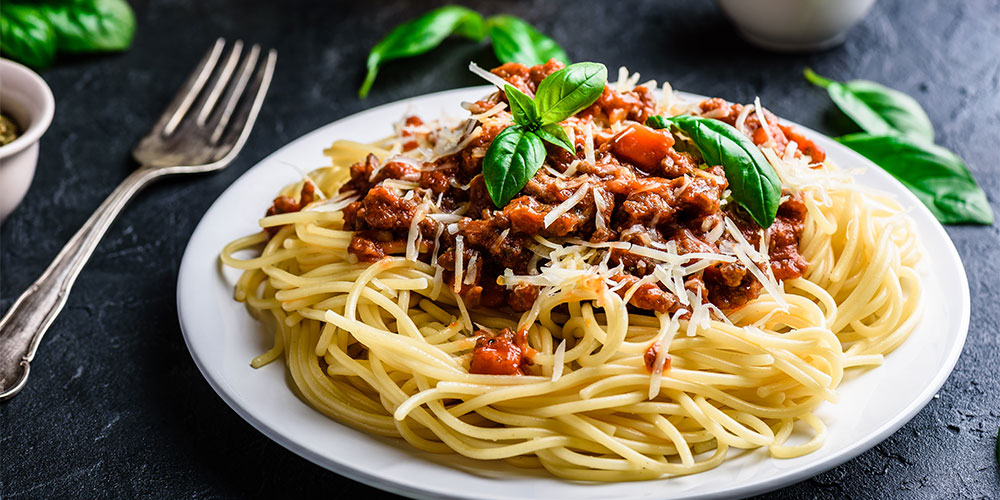
By clicking a retailer link you consent to third party cookies that track your onward journey. If you make a purchase, Which? will receive an affiliate commission which supports our mission to be the UK's consumer champion.
How to match food and wine successfully

Deciding which bottle goes best with your food can make a world of difference to your enjoyment of both.
Choose well and flavours are heightened, but the wrong decision could make your meal taste watered down.
Wine expert Kathryn McWhirter has been writing about food and wine matching for decades.
Here, she gives us tips on how to get the perfect wine pairing for your food, and what wines go best with a range of popular food types.
Tips for living well - get our free Food & Health newsletter: shop savvy, eat well, stay healthy
Five tips for perfect wine pairing

1. Match the biggest flavours in a dish
More often than not, that's likely to be herbs, spices, tomatoes, garlic, ginger or vegetables rather than fish or meat.
2. Be led by the grapes
If New Zealand sauvignon blanc tastes wonderful with dill or sage, so will other sauvignons, such as Sancerre.
You might also try similar-tasting grapes, like verdejo from Spain or bacchus from England.
3. Match sweetness
A dry white or red won't pair well with a sweet dessert. The wine will taste dull and fruitless.
It’s best to match the sweetness of food and wine. So, don’t drink your poshest wine with sweet and sour sauce.
4. Acidity matters
If your dish contains sharp elements such as lemon or lime juice, tomato or vinegar, then a zingy wine with good acidity will taste better alongside it. Rounder, softer wines might taste flabby.
A wine with higher acidity can also cut through the fattiness of a dish, like vinegar through fish and chips. A wine might have higher acid because it comes from cooler places by the sea, or high in hills or mountains.
5. Don’t overpower your food (or your wine!)
Big flavours overpower smaller ones, so make sure the intensity of the wine you choose matches the intensity of the food. You need to consider the body of the wine, tannins, acidity levels, sweetness, aroma and alcohol.
Start off right with a Best Buy wine - see our round-up of the best champagnes, best sparkling wines and best red wine.
What wine goes best with popular foods
Beef

Beef is brilliant with wines from the Gamay grape, such as Beaujolais (beef doesn’t need a massive, beefy wine) as well as malbec, the touriga nacional grape of Portugal, southern Italian primitivo or red zinfandel.
Go easy on the horseradish sauce - it will make your wine taste flat.
For tips on what to look out for when buying beef and how to prepare it, see our guide on how to cook roast beef.
Cheese

We think of cheese as a natural partner to red wine, but in many case it matches well with white wines too. Here are some tips:
- Gruyère – works well with riesling, red rioja, tempranillo, montepulciano d’abruzzo, red bordeaux and beaujolais
- Cheddar – try chardonnay, sauvignon, semillon or a blend from those, or touriga nacional or a douro blend from Portugal, or pinot noir
- Mozzarella – melted on pizza, mozzarella is delicious with dolcetto (red, Italian) and with sauvignon blanc
Chicken
Chicken works well with lots of wines, but particularly with frascati, merlot and the sangiovese grape of Italy (the main variety in chianti).
Chilli con carne
Chilli con carne is great with beaujolais and valpolicella, and Portuguese bairrada.
Chinese food
It’s hard to generalise about Chinese cuisine, but red wines might taste tougher than they really are and dry whites can taste flat.
Kathryn says that inexpensive, off-dry German wines cope best with Chinese food. You can also consider a beer instead, to soothe the heat.
Citrus flavours

- Lemon – in sweet dishes, lemon goes with sweet muscat and Hungarian tokaji. In dry dishes, the zest can really enhance the flavour of white wines. It’s especially great with riesling, dry muscat, gewürztraminer, sauvignon and picpoul.
- Lime – pair sweet dishes with riesling. In savoury dishes, lime zest tastes brilliant with muscadet, riesling, chenin blanc and gavi.
- Orange – enjoy desserts with sweet Muscat. Orange zest in savoury dishes works nicely with pinot grigio or pinot gris, dry muscat, riesling, rueda, gewürztraminer.
Eggs
Eggs and wine aren't generally a great combo. Reds and rosés in particular can clash.
Among white wines, there’s something about the flavour of un-oaky chardonnay that makes it a good foil for the flavour of eggs.
Fish

- Sardines – sardines pair well with alvarinho/albariño or godello grapes from Northern Portugal and Spain, especially if soaked in olive oil and mashed with chopped parsley, lemon zest, capers and a bit of caper juice.
- Tuna – bright, salty tinned tuna is better with white wine. Try sauvignon blanc or un-oaked white rioja, but in a risotto or bake, think about the other flavours, herbs or spices. Fresh tuna works surprisingly well alongside red wine.
Fresh berries

Strawberries, sugar and cream taste superb with sauternes and sweet semillons. They also work well with very sweet riesling.
Sweet riesling or muscat go best with raspberries, blackcurrants and blackberries.
Indian food

There may be sweetness in Indian foods, and a wine-challenging array of simultaneous dishes. But the spices find good wine partners, as do ginger, onion and garlic.
Indian dishes can over-emphasise the tannin (bitterness, astringency) of red wines. Rosé's can work, but the best may be aromatic whites - try viognier or sauvignon blanc.
If you’d really like red wine, pick a light option from the Loire Valley, especially from the cabernet franc grape.
Lamb
Lamb works well with red grapes – garnacha and tempranillo, perhaps from rioja, merlot, cabernet sauvignon and cabernet franc.
However, note that mint sauce can make the wine taste flat.
Lasagne
The milky sauce of lasagne makes it tricky to partner perfectly, but it should work fairly well with barbera or shiraz.
For a vegetable lasagne, Kathyrn suggests picpoul de pinet or chianti.
Mustard
Dijon and wholegrain mustards are friendlier to both red and white wines. Dijon mustard can magically make a tough red wine taste softer.
Pasta sauce

With a fresh tomato sauce, try sauvignon blanc or add some chopped peppers and switch to gewürztraminer.
If you're dealing with creamy or egg-based sauce, both are best with white wines. They make red wines taste bitter.
Discover tasty affordable red wines available at your local supermarket with our guide to the best red wines.
Peppers
Sweet peppers partner with certain red and white wines perfectly, whether cooked or uncooked.
Peppers of all colours are a good match with gewürztraminer, dry muscat and alvarinho or albariño, while red peppers in particular work well with shiraz or beaujolais.
Pesto

According to Kathryn, pesto loves a chardonnay or pinot grigio.
Pork
Pork goes with plenty of wines. Beaujolais is brilliant, and syrah, shiraz and pinot noir are great. Alternatively, pick an alentejo red from Portugal, or chablis for a white.
Apple sauce won’t help the wine, unless you switch to German riesling.
Sausages

Sausages like the same wines as their meat, but herbs and spices will make all the difference. If they're flavoured with sage, go for sauvignon blanc or syrah/shiraz.
Cumberland likes pinot noir. Pork and herb and pork and leek like carmenère. Toulouse goes for South African pinotage or Spanish rueda.
Spaghetti bolognese

Spaghetti bolognese is easy to pair with red wines – you might try primitivo or its American cousin zinfandel, shiraz/syrah.
Barbera from Italy or Argentina could also work.
Thai food

Thai food may have high acid, some sweetness, super-charged chilli, fish sauce, ginger, and a delicious complexity of herbs and spices.
Sauvingon blancs cope well with many Thai dishes, or try an off-dry Riesling or pinot gris/pinot grigio.
A soft lager is a good alternative option when tucking into Thai food.
Vegetables
These often have a touch of natural sweetness, especially root vegetables. They can go well with wines with a similar hint of sweetness – think inexpensive vinho verde or German riesling.
Whites tend to go better than reds, as some vegetables make red wines taste extra bitter.
Foods that don't pair well with wine

If you're dishing out a delicious wine, avoid letting ketchup and other sweetish, vinegary sauces such as brown, tartare, chutney, BBQ and sweet chilli dipping sauce near the table.
Horseradish, wasabi and smooth, yellow English mustard likewise make wines taste flat and boring.
Salad dressing works with wine so long as the dressing is not too acidic – add extra oil, or choose a sharper wine such as vinho verde or muscadet.
Foods with organosulfur compounds (broccoli, cabbage, asparagus) also have the potential to ruin your wines.
Where to buy wine
Aside from the big supermarkets, popular online retailers that stock wine include:
- Majestic Wine sells a wide selection of wines that you can filter by country of origin. The retailer's cheapest reds start at around £5.
- Naked Wines has wines arranged by style, with popular picks including 'crisp white' and 'fruity red.' The website has a community tab where other wine fans share recommendations.
- Virgin Wines is home to various pre-mixed cases of red and white wines. You can also purchase single bottles and alcohol-free alternatives.
- Laithwaites Wine offers a wine subscription service that saves you a trip to the supermarket.
Wine clubs compared - see if a subscription service is for you.
Please drink responsibly. See Drinkaware for advice.



















